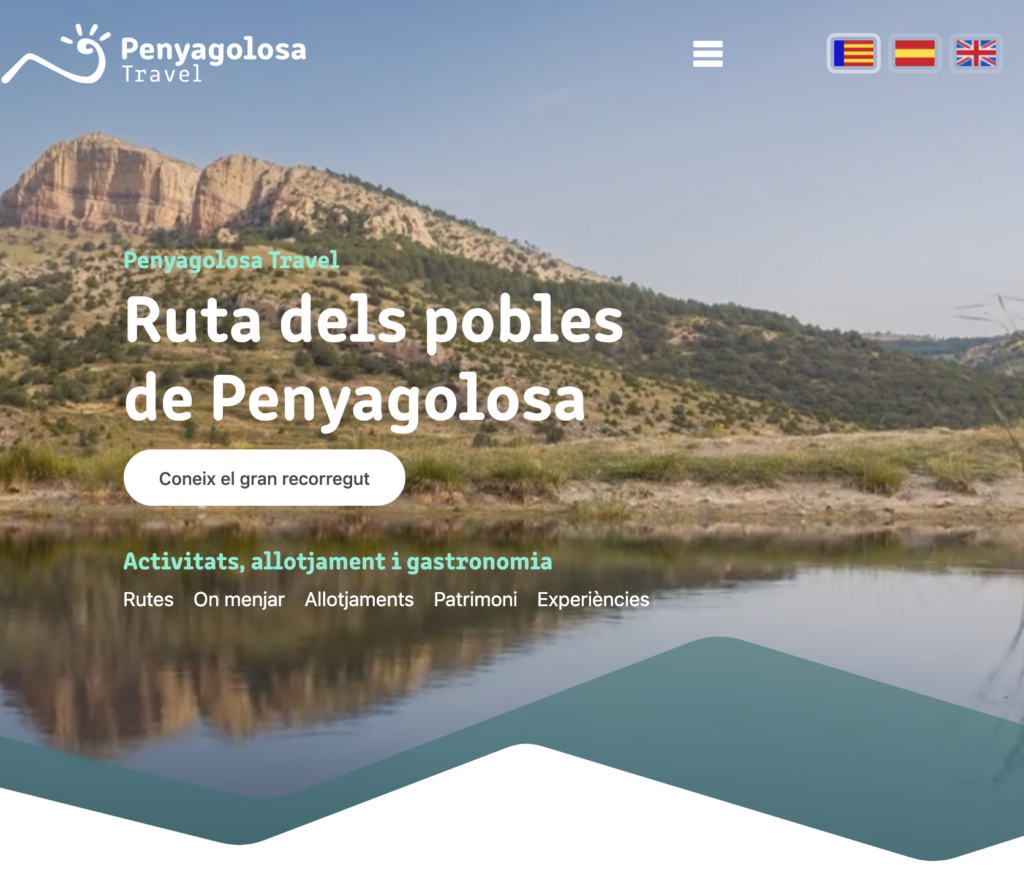Travel to Castelló is easy, with available flights from many international destinations. The main three airports in Spain are well-connected to Castelló.
From the aeropuerto internacional de El Prat (Barcelona) you can get a train to Castelló which takes only 2 hours.
From the aeropuerto internacional de Valencia (Valencia) you can get a train to Castelló which takes only 40 minutes.
From the aeropuerto internacional Adolfo Suárez-Barajas (Madrid) you can get a train which takes only 2 hours 30 minutes.
From the Castellón airport you can get a bus to Castellón which takes only 30 minutes
From Barcelona airport (BCN)
1. Train
From El Prat international airport to the Barcelona Sants train station there is a commuter train (cercanías/rodalies) which lasts 20 minutes and costs 4,60€. For more information, click here.
From the Barcelona Sants train station there are regular trains heading to Castelló. You can pick between three different types: Euromed, Talgo and Media distancia, where the prices fluctuate between 20€ and 50€, and they last between 2 hours and 4 and a half hours. For more information about this route, please click here.
NOTE – The train schedules and prices are usually published about a month and a half before the journey, don’t get overwhelmed if you can’t see them yet, but neither buy the tickets too late.
2. Bus
There is a good connection by bus between Barcelona and Castelló. The buses leave Barcelona from the airport’s first terminal and from the Barcelona Sants Train Station. The buses last between 4 hours and 4 and a half hours to get to Castelló, and the prices fluctuate between 20€ and 40€. For more information about this route, please click here.
3. Car
The most appealing route is to follow the AP-7 until the Castelló de la Plana exit, there is a 13€ toll, and the journey lasts 2 hours and 40 minutes. If you want to check the route, here you have the Google Maps’ link.
From Valencia airport (VLC)
1. Train
From the Valencia international airport, take the 3rd or the 5th subway line until “Xàtiva” stop. The route lasts 25 minutes and a single ticket cost 4,90€. For more information about Valencia’s subway, please click here.
From “Xàtiva” subway stop, walk to the Estació del Nord train station, where you can buy a commuter train ticket to Castelló. The commuter trains last between 1 hour and 1 hour and 30 minutes, and the tickets cost between 6€ and 8€. For more information about this route, please click here.
If you prefer so, you can take a high-speed line (AVE/Euromed). In that case, from the Valencia international airport take the 3rd or the 5th subway line until “Àngel Guimerà” stop and make a transfer to the 1st or the 2nd line until the “Jesús” stop. The route lasts 30 minutes and a single ticket cost 4,90€. For more information about Valencia’s subway, please click here.
From “Jesús” subway stop, walk to the Joaquín Sorolla train station, where you can hop in a train to Castelló. The route lasts between 40 and 45 minutes, and the tickets costs between 12€ and 16€. For more information, please click here.
NOTE – The train schedules and prices are usually published about a month and a half before the journey, don’t get overwhelmed if you can’t see them yet, but neither buy the tickets too late.
2. Bus
From the Valencia international airport take the 3rd or the 5th subway line until “Àngel Guimerà” stop and make a transfer to the 1st or the 2nd line until the “Túria” stop. The route lasts 30 minutes and a single ticket cost 4,90€. For more information about Valencia’s subway, please click here.
From the “Túria” subway stop, walk to the Valencia bus station, where you can hop in a bus to Castelló. The buses last between 70 and 90 minutes, and the tickets cost between 6€ and 10€. For more information, please click here. For buying the tickets online, please click here.
3. Car
The most appealing route is to follow the E-15/AP-7 until the Castelló de la Plana (47) exit, there is no toll, and the journey lasts 55 minutes. If you want to check the route, here you have the Google Maps’ link.
From Castelló airport (CDT)
1. Bus
From Castelló airport there is a bus service that takes you to the city of Castelló in 30 minutes. If you want to consult more information about schedules and prices, click here.
2. Car
Castelló airport is located 20 minutes by car from the city of Castelló.
From Madrid airport (MAD)
1. Train
From Adolfo Suàrez-Barajas international airport (T1, T2, T3) take the 203-shuttle bus to Madrid Atocha train station. The route lasts 30 minutes, and the ticket costs 5€. For more information, please click here.
From Madrid Atocha train station there are regular trains heading to Castelló. You can pick between two different types: AVE and Intercity, where the prices fluctuate between 40€ and 55€, and they last between 2 and a half hours, and 4 and a half hours. For more information about this route, please click here.
NOTE – The train schedules and prices are usually published about a month and a half before the journey, don’t get overwhelmed if you can’t see them yet, but neither buy the tickets too late.
2. Bus
From the 1st or the 4th terminals of the Adolfo Suàrez-Barajas international airport, pick a direct bus to Castelló. The buses last between 6 and 6 and a half hours, and the tickets cost 36€. For more information, please click here.
3. Car
The most appealing route is to follow the A-3 and then the AP-7 until the Castelló de la Plana exit, there is a 4,50€ toll, and the journey lasts 4 hours. If you want to check the route, here you have the Google Maps’ link.
CASTELLÓ
In the north of the Valencia region, the Castelló province has a coastline of 120 km lining the shores of the Mediterranean. This doesn’t prevent it from being Spain’s second most-mountainous province, located between the foothills of the Iberian System and the Catalan coastal mountain range.
From the city of Castelló, Penyagolosa Trails travels a long way to Sant Joan de Penyagolosa, which provides an opportunity to get to know Castelló inland. Nature, mountains and historic trails and routes allow you to discover countless towns with a rich natural, historical, artistic, gastronomic and cultural heritage.
PENYAGOLOSA
Among all Castelló’s mountains, Penyagolosa Trails has the privilege of enjoying the most mythical one. The Penyagolosa, known as Gegant de Pedra (Stone Giant), is a peak 1814 meters high and located in the Penyagolosa Natural Park, with a land mass of about 1,100 hectares between L’Alcalatén and L’Alt Millars regions, is a magical setting for the MiM and the CSP.
At the heart of the Penyagolosa stands the Ermitorio de Sant Joan de Penyagolosa, which is the destination of pilgrimages from surrounding villages, and which is enveloped by a myriad of stories and legends.
Surrounded by great natural wealth, the trail runs through a landscape formed by steep hills parallel to the coast, with deep ravines and wide swaths of shrub, holms and pine forests. Its significant elevation change affords a progressive change in vegetation, which has gradually adapted to the altitude and, therefore, to the mountain’s harsh continental climate.
CAMINS DE PENYAGOLOSA
The Penyagolosa wants to go one step further and, for that, they are working toward international recognition. Camins de Penyagolosa hopes to have the United Nations Educational, Scientific and Cultural Organization (UNESCO) to declare it a World Heritage site.
This place has significance. It is the sanctuary dedicated to San Juan Bautista and is in the outskirts of the Penyagolosa. A symbolic sanctuary that has been the destination of pilgrimages that date back to the XIV century and to which routes originate from different municipalities. It motivated even top tier sports competitions as the MiM and the CSP are.
Today, many of these routes have disappeared. But others have survived over time or have been restored through the commitment of surrounding villages. This is the case of Els Pelegrins of Les Useres or the pilgrimages of Culla, Vistabella, Puertomingalvo and Xodos. Religious routes and historic means of communication await declaration as a World Heritage site in order to continue guarding it as an archaeological, architectural, ecological and ethnological heritage.
The northern villages of Castellón have come together to promote themselves. For this reason, they have created the website www.penyagolosa.travel where you can find all the information about them.
These villages also promote a circular route that runs through all of them, crossing the Penyagolosa Natural Park. A tour through the municipalities of Atzeneta del Maestrat, Benafigos, Vistabella del Maestrat and Xodos, which will allow you to enjoy an abrupt orography of steep slopes and deep ravines, with an incredible landscape. This stage tour takes between 2 and 5 days to be completed, as it has 60 kilometers and 2200 meters of elevation gain.
Consult all the information of the northern villages and the route that joins them in www.penyagolosa.travel













